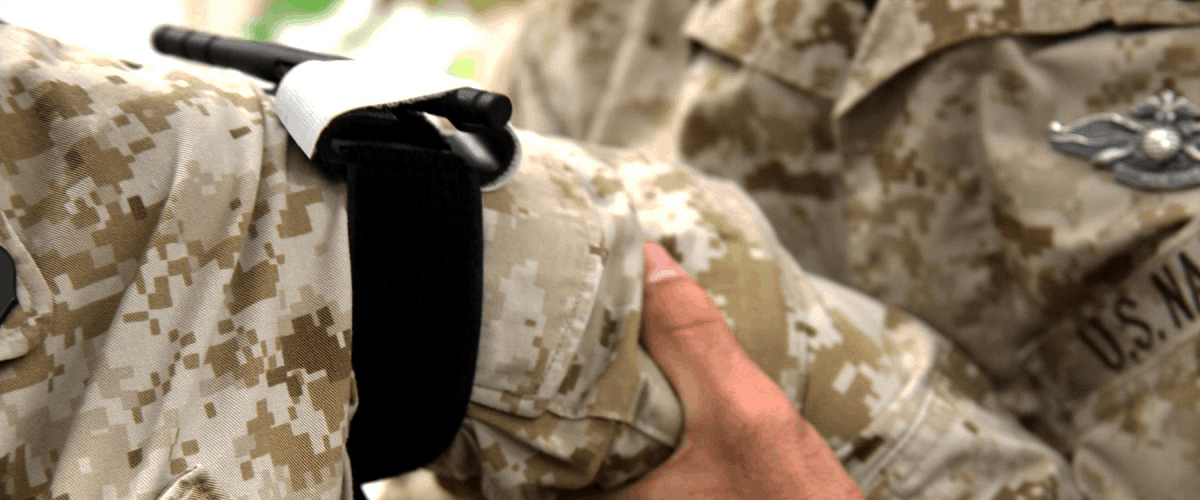One of the oldest and most common improvised emergency medical techniques is the tourniquet. As such, it’s become a staple of wilderness survival. But what exactly is a tourniquet? And more importantly, how do you do it correctly?
To begin, let’s clarify as to what a tourniquet does and how it works. You’ll likely have seen one used in movies or shows where someone has an arm or leg injury. This is because a tourniquet is used to slow down the flow of blood to a limb to avoid blood loss from an open wound. This works by creating a restriction around the limb and forcing arteries closed. Tourniquets are sometimes confused for splints, which are used to hold a broken bone in place.
How to Make an Improvised Tourniquet
Needed items: tying material (cloth, rope, yarn, etc), A strong but short stick
- Get Clean. Ensure you are somewhere safe. Clean the wound of any debris and dirt. Clean your hands as well.
- Apply Pressure. Until the tourniquet is applied, you need to cover the wound with a cloth or gauze and keep pressure applied.
- Wrap The Limb. Using the wrapping material you chose, wrap it around the limb a few inches above the wound itself. Do not wrap it around a joint, though. If a knee or elbow is in the way, wrap it right above that.
- Tie the Stick to the Wrap.
- Turn the stick, once secure, winding it up. This will create additional tension, restricting blood flow. Make tight enough to stop blood flow.
- Ties the Stick in Place. This keeps the tension from loosening up.
- Lay the person down. Avoid having the injured party perform any physical activity that they don’t have to.
- Wait for help. Assuming help is on the way. Either way, you need a professional to fix it properly eventually. The sooner the better.
You can also purchase travel tourniquet sets, which work much better than an improvised one.
Don’t forget: being careful can avoid injury, and if you don’t have a lethal wound, you don’t need to treat a lethal wound.

